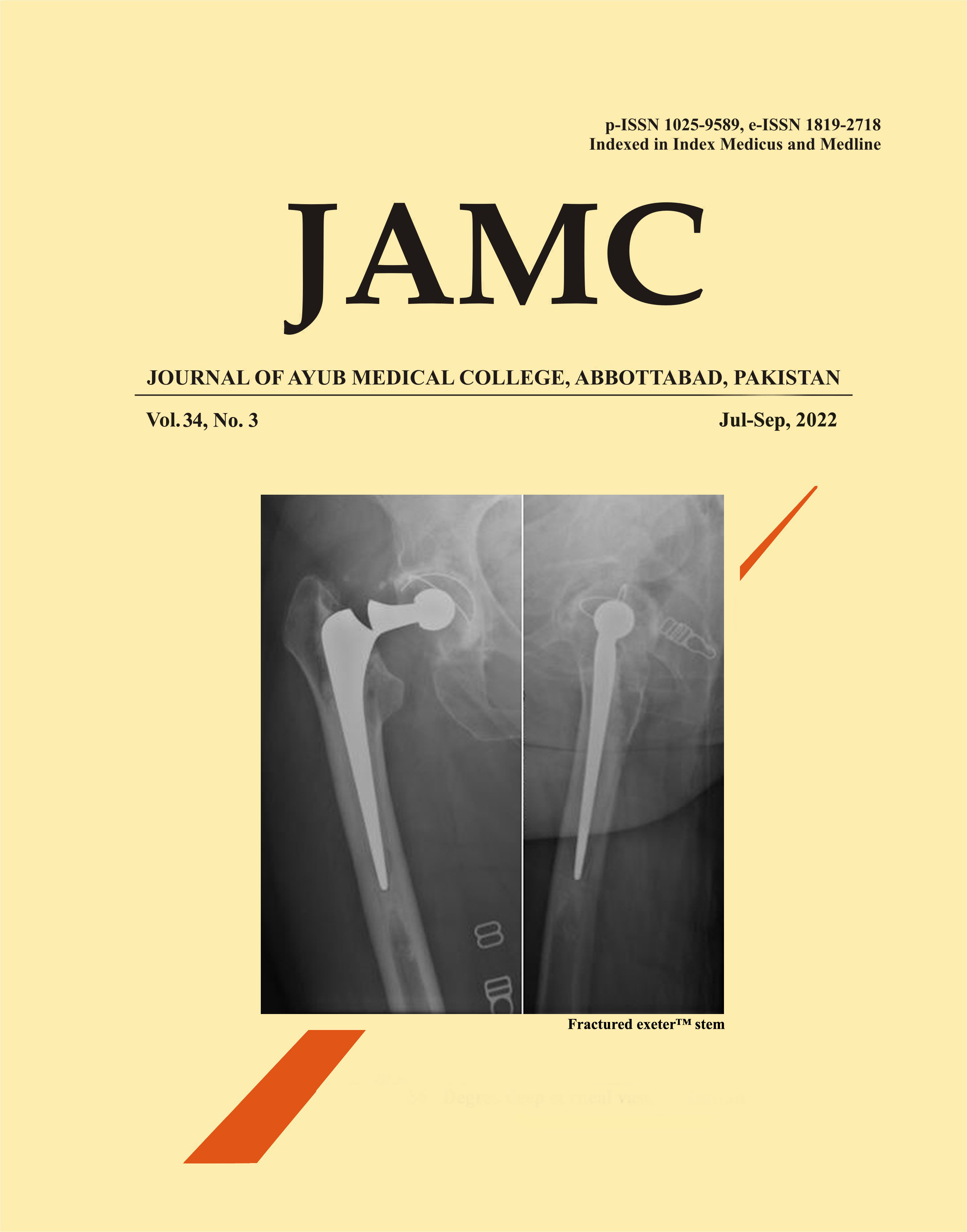THE ROLE OF IL-6 IN THE MANAGEMENT OF MEDICAL TREATMENT OF PATIENTS WITH COVID-19-ASSOCIATED ACUTE RESPIRATORY DISTRESS SYNDROME
DOI:
https://doi.org/10.55519/JAMC-03-10410Keywords:
interleukin-6, COVID-19, ARDS, cytokine storm, medical treatmentAbstract
Background: Many cytokines propose to play a role in the pathogenesis of Severe Acute Respiratory Syndrome Coronavirus type 2 (SARS-CoV-2) associated COVID-19 disease. High interleukin-6 (IL-6) levels are associated with mortality and other poor clinical outcomes in COVID-19. Methods: In this retrospective study, the correlation of IL-6 level with clinical and other inflammatory parameters, its role in treatment change and its relationship with mortality in COVID-19 patients developing acute respiratory distress syndrome (ARDS) were investigated. Results: Totally 76 patients were included in the study; Thirty-four (44.7%) patients were female and 42 (55.3%) patients were male. All patients had IL-6 levels above the upper reference value (>5.9 pg/mL). Overall, 48 patients (63.1%) had a severe clinical presentation (tachypnoea, tachycardia, fever) that was clinically compatible with IL-6 values, and medical treatment was changed for COVID-19 in this group. A positive correlation was detected between IL-6 and CRP on the day of the change in treatment (p=0.035, r=0.76). There was no decrement observed in IL-6 level on the 3rd day in patients that was clinically thought to have cytokine storm and whose treatment was changed. Mortality was higher in the group whose treatment was changed. Conclusion: We believe that IL-6 level alone is insufficient to decide on a change in treatment, and correlation of IL-6 with the patient's clinical status is more significant in such decision.
References
Organization WH. Director-General's remarks at the media briefing on 2019-nCoV on 11 February 2020. http://wwwwhoint/dg/speeches/detail/who-director-general-s-remarks-at-the-media-briefing-on-2019-ncov-on-11-february-2020 2020.
Channappanavar R, Perlman S. Pathogenic human coronavirus infections: causes and consequences of cytokine storm and immunopathology. Semin Immunopathol. 2017;39(5):529-39.
Li G, Fan Y, Lai Y, Han T, Li Z, Zhou P, et al. Coronavirus infections and immune responses. J Med Virol. 2020;92(4):424-32.
Xu Z, Shi L, Wang Y, Zhang J, Huang L, Zhang C, et al. Pathological findings of COVID-19 associated with acute respiratory distress syndrome. Lancet Respir Med. 2020;8(4):420-2.
Yao XH, Li TY, He ZC, Ping YF, Liu HW, Yu SC, et al. [A pathological report of three COVID-19 cases by minimal invasive autopsies]. Zhonghua Bing Li Xue Za Zhi. 2020;49(5):411-7.
World Health Organization WHO. https://covid19.who.int 2021 [
Zhou P, Yang XL, Wang XG, Hu B, Zhang L, Zhang W, et al. A pneumonia outbreak associated with a new coronavirus of probable bat origin. Nature. 2020;579(7798):270-3.
Turner AJ, Hiscox JA, Hooper NM. ACE2: from vasopeptidase to SARS virus receptor. Trends Pharmacol Sci. 2004;25(6):291-4.
Aziz M, Fatima R, Assaly R. Elevated interleukin-6 and severe COVID-19: A meta-analysis. J Med Virol. 2020;92(11):2283-5.
Zhu J, Pang J, Ji P, Zhong Z, Li H, Li B, et al. Elevated interleukin-6 is associated with severity of COVID-19: A meta-analysis. J Med Virol. 2021;93(1):35-7.
Herold T, Jurinovic V, Arnreich C, Lipworth BJ, Hellmuth JC, von Bergwelt-Baildon M, et al. Elevated levels of IL-6 and CRP predict the need for mechanical ventilation in COVID-19. J Allergy Clin Immunol. 2020;146(1):128-36 e4.
Health RoTmo. https://covid19bilgi.saglik.gov.tr/depo/rehberler/covid-19_rehberi.pdf. 2021.
Hunter CA, Jones SA. IL-6 as a keystone cytokine in health and disease. Nat Immunol. 2015;16(5):448-57.
Calabrese C, Rajendram P, Sacha GL, Calabrese L. Practical aspects of targeting IL-6 in COVID-19 disease. Cleve Clin J Med. 2020.
Luo P, Liu Y, Qiu L, Liu X, Liu D, Li J. Tocilizumab treatment in COVID-19: A single center experience. J Med Virol. 2020;92(7):814-8.
Liu T, Zhang J, Yang Y, Ma H, Li Z, Zhang J, et al. The role of interleukin-6 in monitoring severe case of coronavirus disease 2019. EMBO Mol Med. 2020;12(7):e12421.
Galvan-Roman JM, Rodriguez-Garcia SC, Roy-Vallejo E, Marcos-Jimenez A, Sanchez-Alonso S, Fernandez-Diaz C, et al. IL-6 serum levels predict severity and response to tocilizumab in COVID-19: An observational study. J Allergy Clin Immunol. 2021;147(1):72-80 e8.
Sayah W, Berkane I, Guermache I, Sabri M, Lakhal FZ, Yasmine Rahali S, et al. Interleukin-6, procalcitonin and neutrophil-to-lymphocyte ratio: Potential immune-inflammatory parameters to identify severe and fatal forms of COVID-19. Cytokine. 2021;141:155428.
Downloads
Published
How to Cite
Issue
Section
License
Journal of Ayub Medical College, Abbottabad is an OPEN ACCESS JOURNAL which means that all content is FREELY available without charge to all users whether registered with the journal or not. The work published by J Ayub Med Coll Abbottabad is licensed and distributed under the creative commons License CC BY ND Attribution-NoDerivs. Material printed in this journal is OPEN to access, and are FREE for use in academic and research work with proper citation. J Ayub Med Coll Abbottabad accepts only original material for publication with the understanding that except for abstracts, no part of the data has been published or will be submitted for publication elsewhere before appearing in J Ayub Med Coll Abbottabad. The Editorial Board of J Ayub Med Coll Abbottabad makes every effort to ensure the accuracy and authenticity of material printed in J Ayub Med Coll Abbottabad. However, conclusions and statements expressed are views of the authors and do not reflect the opinion/policy of J Ayub Med Coll Abbottabad or the Editorial Board.
USERS are allowed to read, download, copy, distribute, print, search, or link to the full texts of the articles, or use them for any other lawful purpose, without asking prior permission from the publisher or the author. This is in accordance with the BOAI definition of open access.
AUTHORS retain the rights of free downloading/unlimited e-print of full text and sharing/disseminating the article without any restriction, by any means including twitter, scholarly collaboration networks such as ResearchGate, Academia.eu, and social media sites such as Twitter, LinkedIn, Google Scholar and any other professional or academic networking site.









